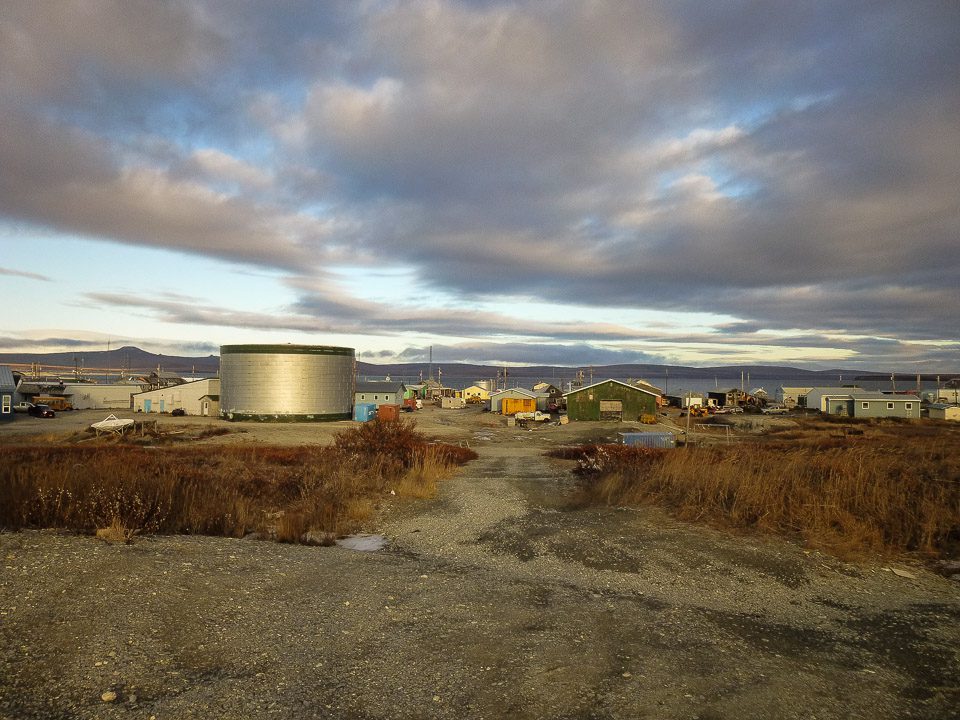Amid Nome’s on-going off-shore gold boom, one operation is trying to expand into the waters near Teller and Brevig Mission.
Hank Schimschat owns the Au Grabber–or Gold Grabber– an 80-foot barge dredge with an excavator arm. Schimschat filed for permits to begin work this season.
“My intention is to go up and mine for gold on state-owned DNR land. About 3,600 acres up in Teller, only in Grantley Harbor—not in Tuksuk Channel, and not in Imuruk Basin,” Schimschat said.
Off-shore mining in Grantley Harbor—a closed body of water just east of Teller and Brevig—is a new prospect, and is raising concerns in both communities.
But Schimschat believes environmental and subsistence worries are unwarranted.
“Mining and subsistence can co-exist. It doesn’t hurt the environment,” he explained. “I fully understand the way of subsistence life. And I have compassion for the native people–I have a lot of friends that are native people, and I understand that the subsistence life is a big part of their life, and I have 100% respect for that.”
But not every one agrees the mining impact will be neutral. Delegations from both Teller and Brevig Mission came to Nome to testify against Schimschat’s potential permit at a public meeting earlier this month.
“There’s a deep big concern about the disturbance of our subsistence area, and it’s heavily used by Brevig and Teller,” said Annie Conger, who is from Brevig Mission, and travels back to her family’s fish camp there each summer.
Conger and others are worried what mining will do the sockeye salmon runs in the area, which have declined in recent years, she said. They also fear the dredging may infringe on another subsistence resource, one legislated not by the state but by the Federal Government.
“In the Port Clarence Bay area during the spring and the fall people go out there to hunt for seals—there’s an island–called Seal Island,” Congers chuckled, “where people will go there to hunt for the ringed seal, and also the spotted seals. Fall time we have the juvenile bearded seal that people go out and hunt.”
Grantley Harbor is used by spotted seals and ugruks, both of which are protected under the Endangered Species Act and Marine Mammal Protection Act. The listings mean stricter regulations than mining set-ups closer to Nome.
Because operations like the one being proposed by Schimschat are new, regulatory concerns over issuing a permit are being figured out in real time. KNOM contacted multiple state and federal agencies, including the Department of Natural Resources, and no one was certain how the Gold Grabber’s proposal fits into current off-shore mining regulations.
Jack Kerin supervises mining and permitting for DNR, and is familiar with the Gold Grabber application to mine in Grantley Harbor. He explained that under stipulations from the Northwest Area Plan the habitat in the area is considered highly sensitive, adding several layers of complexity in the permitting process. Given the array of agency approval necessary to weight environmental and species impacts from large-scale dredging, and without proven reserves demonstrated in the application submitted, it is unlikely the permit will be approved on the same pace as it might be in the area around Nome.
Schimschat is featured on the Discovery Channel’s Bering Sea Gold franchise. Discovery Channel employees were not allowed to respond to questions, referring KNOM to California-based public relations firm that has yet to respond to questions.
This Wednesday, June 25th, Kawerak and leaders from Teller will be hosting a public forum to address, among other issues, potential mining projects nearby. A representative from DNR will give an update on a permit application for off-shore gold dredging in Grantley Harbor.
The forum is from 5pm – 6pm in the Teller Community Bingo Hall.
This version of the story includes information added after it was first broadcast, including meeting details and comments made by Jack Kerin with DNR.







